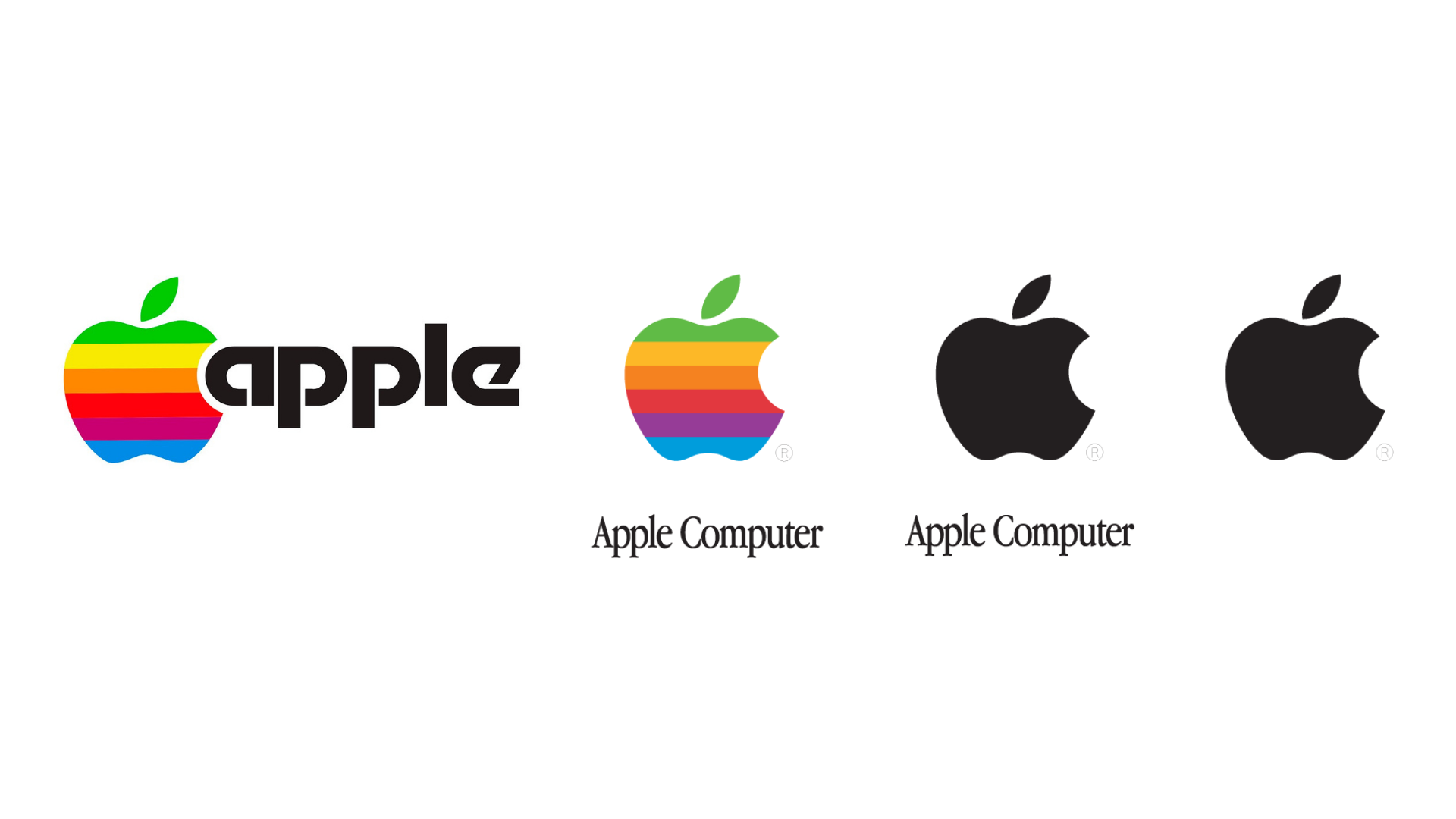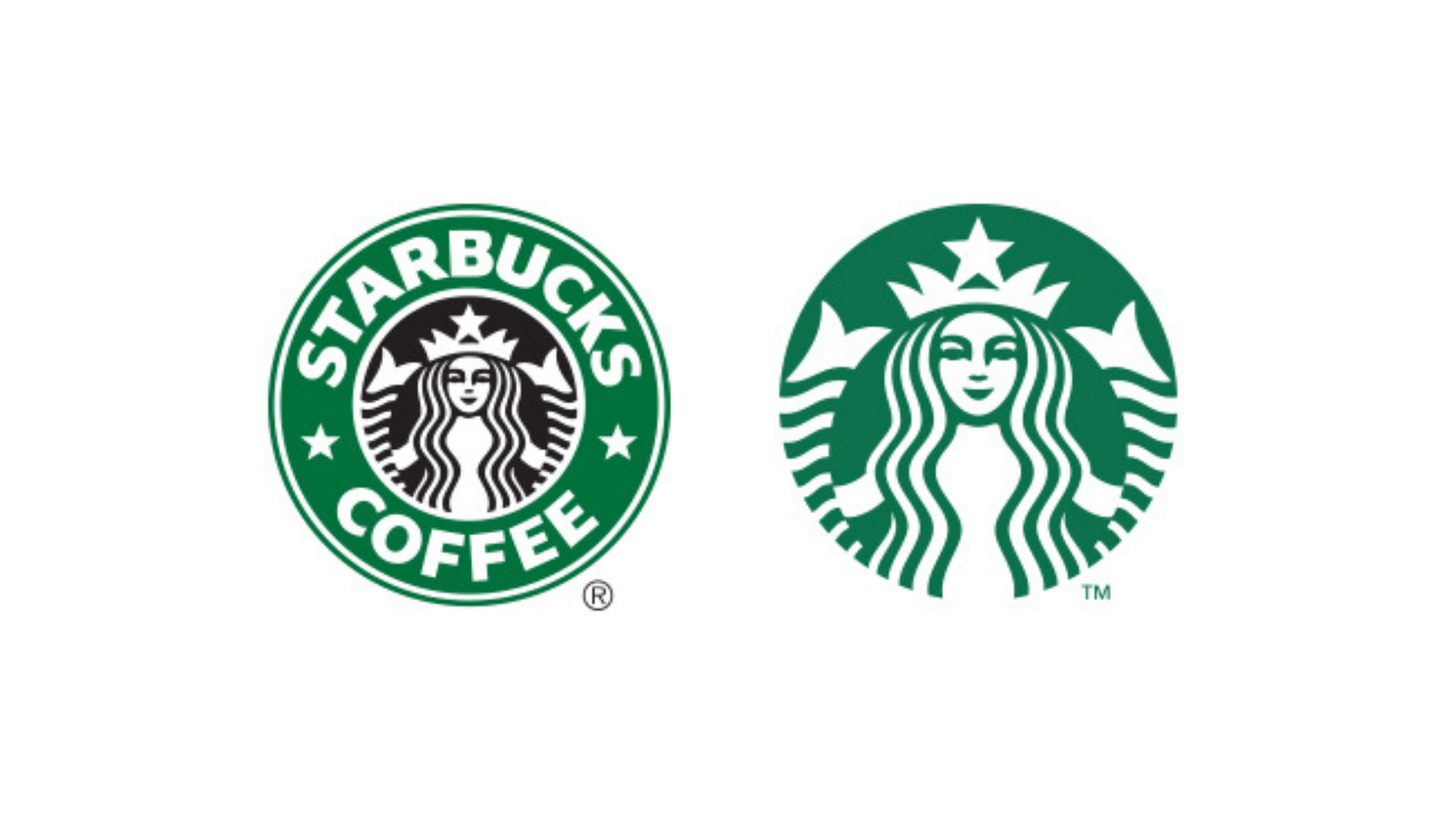Rebranding is one of the dilemmas a business owner may face while operating. When should I rebrand? Is rebranding really worth the amount of money and time invested? And more importantly, when is rebranding worth it? These are some of the questions you would ask if you are ever considering rebranding.
Rebranding is a tedious process that requires these sacrifices, and hence it is important to know the entire process, pros, and cons in order to make a wise decision on whether you should embark on this journey.

Apple’s Rebranding Journey
What Does Rebranding Mean?
Rebranding is often associated with a change in brand visuals, be it brand name or logo. But beyond the surface of how your brand should look visually, effective rebranding focuses more on reshaping how the company should be perceived through research. We realign the brand strategy, looking specifically at brand values, objectives, mission, vision, and purpose to reposition the brand so it can better meet the needs of customers and market opportunities. In the identity phase, we then recreate the entire brand by reinventing the brand visuals according to the new brand strategy.
With that, rebranding is indeed starting over and going back to square one to rethink the brand’s purpose. If you are ever considering rebranding, it is good to know the difference between a brand refresh or a complete rebrand. Most people jumped straight to the latter without knowing about brand refresh and your decision will affect the cost incurred since there is a significant cost difference between the two.
The most important difference between a brand refresh and a complete rebrand lies in whether there is comprehensive research and strategy.
Simply just want to change your logo so it better suits your target group? Consider brand refresh. It is less complex in its execution without the in-depth research on external and internal stakeholders and replanning of the strategy. This includes making minor changes to the colour palette, using a new font for your logo, and tweaking your design.

Brand Refresh – Starbucks
Advantages Of Rebranding
It is obvious that effective rebranding can bring about many huge positive effects for your company. After all, the entire purpose of rebranding is to improve your brand’s image and become more relevant in the market. With effective rebranding, you should expect to see these four benefits:
1. Expand your reach
In the ever-evolving market, many brands become stagnant in the long term. Some may even become irrelevant to their target audience as the brand no longer accurately reflects its values. But with an improved look, it will naturally draw attention from people with the right promotion tactic and messaging. Your refreshed brand image will reach out to the new audience and rekindle interest from your existing audience.
2. Stay relevant
The main purpose of rebranding is to keep your brand relevant. Keeping track of the current design trends helps to keep your branding current and allows your audience to feel constantly connected to your brand. Staying ahead also allows your brand to appear more credible and it shows your audience that you pay attention to such trends in the industry.
3. Stand out from your competitors
In the long haul, more competitors will join your market and it will be harder for your brand to stand out from your industry competitors. Effective rebranding sets your brand apart from the rest and your brand can appear more professional and dependable. With a unique set of voice, feel, and outlook, your brand can develop a personality that appeals to your audience more.
4. Consistent brand messaging
Over time, your brand messaging may become diluted or inconsistent, and this happens when your company deviates away from the original direction the brand has set out to begin. Rebranding helps your brand to refocus and realign your brand values to streamline the messaging so that your audience will not be confused.
Disadvantages Of Rebranding
However, rebranding can sometimes appear overwhelming as it requires lots of back-tracking and an enormous effort to conduct research to plan the branding strategy. When considering rebranding, it is important that you are aware of the negative effects that come with rebranding:
1. Confusion
A sudden change in brand visuals and messaging can more often than not confuse your existing audience into not knowing where the brand is heading. But with press releases, social media posts, and newsletters, you can keep your audience in the loop about what expected changes are to come. Communication is vital during rebranding.
2. Time-consuming
Rebranding can take up to as long as 18 months from research to brand activation. It is a long process as it is important to get in-depth while conducting the surveys and interviews with the relevant stakeholders and plan the brand strategy in detail. But investing this amount of time for more profits and more impactful brand messaging can definitely benefit the brand in the long term.
3. Costly
Undergoing a full rebrand is definitely going to cost. Developing a creative branding strategy, new content, upgraded brand visuals, as well as marketing and advertising campaigns to support your rebranding process, will be the areas where you will be investing most of your money. Investing some money to ensure that the rebranding process is done effectively can help ensure the best outcome which will prove that it was worth the amount spent.
When Should You Rebrand?
Most of the time, all these red flags remain buried in the midst of our hectic schedules. And even when we do notice them, deciding to rebrand is definitely not the easiest option. So how do you know that it is finally time to pick up the phone and bring in the professionals?
1. Logo no longer reflects brand values
What seems like a great brand name and logo a decade ago may no longer mean that it accurately reflects what your brand is about now. This is a clear indicator of how the brand is no longer relevant to its audience. Having a strong brand name lays the foundation of your brand story, and it is crucial to create a unique and memorable brand name.
2. Brand no longer stands out
Does your brand no longer stand out from its competitors? This is one key question you should ask. If your brand is starting to look like any other brand, then maybe it is time for rebranding. In the end, branding is about competitive differentiation. Staying similar to your other competitors can cause stagnant sales and business growth. It is extremely important that your employees and customers understand why they choose the brand over any others.
Another way to know when to rebrand is when your brand starts looking like every other brand.
3. Brand becomes overly diffused/complicated
Has your brand become confusing? Do you struggle to explain what your brand does because your services are too scattered and not aligned? If so, maybe it is time for a rebrand. Following the brand direction over time is challenging, especially for large organisations with many stakeholders that have competing interests. A lack of brand focus can weaken its purpose and messaging and overall, causes ineffectiveness and irrelevance. Hence, it is important to streamline your goals, values, and objectives as a brand and ensure that all employees are on the same page.
4. Change in business model/strategy
When your business model or strategy changes, so must the brand. How your brand is perceived should always align with how it operates behind the scenes. When you rebrand to adapt to the change in business model/strategy, you should start with its foundation: the brand strategy. An effective and comprehensive rebranding begins with going through your company’s purpose, objectives, and values. Go back to step one and think about your company’s progress and vision.
5. Connect with a new audience
In the long term, you may tweak your brand to adapt to a new set of audiences due to new market opportunities. In order to get the attention of your new target audience, it is probably time to consider rebranding. Building brand loyalty starts with adopting your brand purpose to their needs, and hence rebranding allows you to incorporate these needs into your brand experience accordingly.
6. Dissociate brand from negative perceptions
Another sign of rebranding is when there is a need to dissociate your brand from negativity. When you are in a situation where your brand is being associated with negative connotations, rebranding is a simple and effective way to change how the audience perceives your brand by changing your brand image.
7. Expansion of business
When your business is expanding beyond the current geographical state, rebranding is a good way to start your new business. Through rebranding, you can gather insights about the new geographical location, its people, and the up-and-coming trends. You can better understand your potential audience and their needs and adapt your branding according to their preferences.
So Now What?
Still uncertain but considering rebranding after all of this information? Talk to our professionals here today and book a consultation to learn more!





